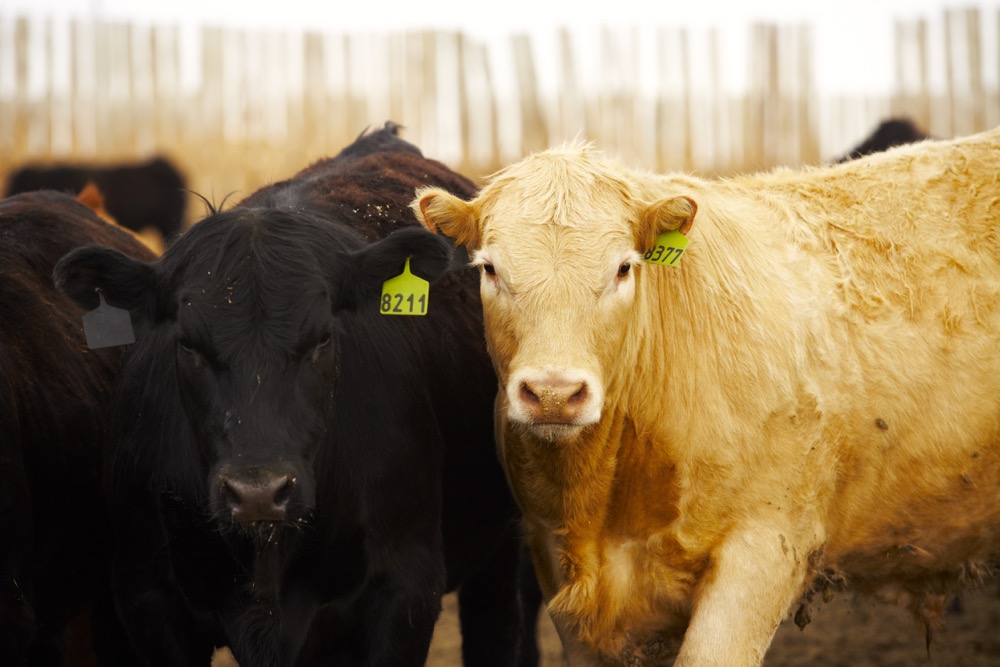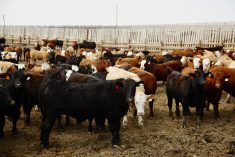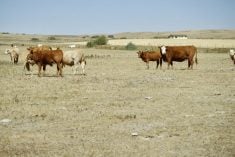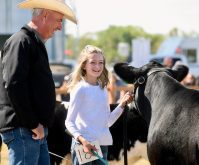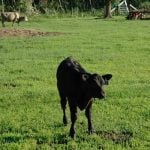Fed cattle
Since the start of 2023, the fed cattle cash market has continued to grind higher. By mid-February, the Alberta fed steer price was $194.10/cwt, which is more than an $8/cwt improvement since the start of 2023, and over $34/cwt higher than the same week in 2022. Although prices have improved, the Canadian market still struggles with the weak basis that was prevalent through much of 2022. The mid-February cash-to-cash fed basis sits at -$18.04/cwt, which is more than $12/cwt wider than the five-year average for the same week. The wide basis has not improved U.S. buyer interest through the first weeks of the year. Fed cattle exports, including cows, are down 10 per cent when compared to the first month in 2022, with a total of 37,638 head exported in January.
[MARKET SUMMARY] Break-evens and market summaries for February 2023
Read Also
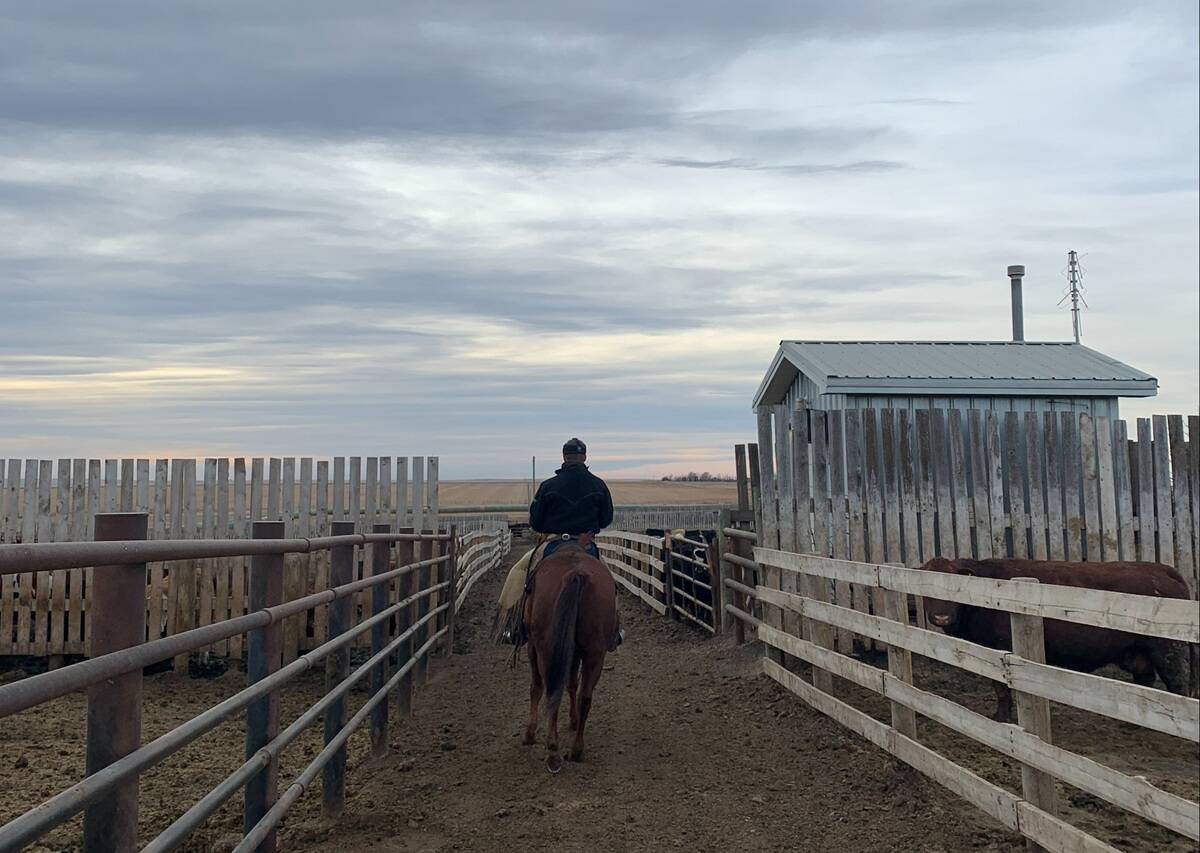
Pen riders still better than tech at detecting respiratory disease in feedlot cattle, says researcher
Recent research found that pen riders are better than tech at flagging signs of BRD in feedlot cattle
Ample front-end supply of fed and non-fed cattle gave Canadian packers leverage over the past few weeks. However, supplies will tighten just as spring BBQ demand improves. Fed steer slaughter through the first five weeks of the year is 13 per cent ahead of a year ago at 172,596 head, while heifer slaughter is down 18 per cent at 84,977 head. Even with the high cost of gain, carcass size still weighed on the market at the start of 2023. In Canada, steer carcass weights at the end of January remained large, 34 pounds larger than a year ago at 957 pounds. Steer carcass weights south of the border are trending more normal for this time of year with their average carcass weights dropping to 16 pounds below a year ago at 829 pounds.
Beef demand remained strong at the end of 2022 and start of 2023 even as economic concerns continued across North America. Cut-out values are lower seasonally. However, demand for premium cuts has remained solid.
Deb’s outlook for fed cattle: Fed cattle supply is expected to tighten in the near term and demand for beef products through the spring will seasonally increase, supporting a stronger fed market. A wide basis and weak dollar generally improve U.S. buyer interest which will provide an export floor and may improve the market. Economic concerns still need to be monitored as inflation plays a role in consumer purchases. However, to date beef demand has stayed strong for premium middle cuts. Fed cattle prices are expected to strengthen through the rest of the first quarter and into the second.
Feeder cattle
There have been aggressive cow marketings over the past few years on both sides of the border. The USDA January 1, 2023 cattle inventory report confirms a further reduction in the U.S. beef cow herd. The recent report shows total beef cows as the smallest total number on record, down another 3.6 per cent from a year ago at a total of 28.9 million head. Canadian data will be released soon.
However, anticipation of tighter feeder supplies is already being noted in the market. Competition for grass cattle to supply a projected strong summer yearling market contributed to a jump in some weight classes. In addition, slightly reduced barley prices and a strong forward technical market supported a rise in all feeder cattle classes. Lightweight calves have seen the biggest rally with the 550-lb.-steer price at $307.14/cwt, which is $7.13/cwt higher than at the start of 2023 and over $77.14/ cwt higher than the same week in 2022.
While heavier feeder prices have also improved, some sales have varied based on quality and type. The average 850-lb.-feeder price in mid-February was $246.93/cwt, up $4.43/cwt from the first week in January and $58.38/cwt higher than the same week in February 2022. The 850-lb.-feeder basis has weakened. However, at -$4.33/cwt in mid-February, it is still $19.14/cwt stronger than the same week last year. The stronger basis and tighter feeder supplies in Canada limited exports. The first month of 2023 saw 33 per cent fewer feeder cattle exported at just 9,215 head.
Deb’s outlook for feeder cattle: Good demand for spring grass cattle and tightening supplies will support stronger prices on lightweight feeders through the remainder of the first quarter. Heavier feeders may not see as much movement but the slightly lower barley price, tight overall feeder supplies and better feedlot margins will all be supportive. Longer term, the smaller North American cow herd will produce fewer feeder calves. Expected demand is creating optimism in the cattle industry through 2023.
Non-fed cattle
A large supply of cows came to town in the new year. Slaughter numbers through the first five weeks of 2023 were up 19 per cent to a total domestic cow kill to date of 60,105 head. From the start of 2023 to the second week in February, the D1,2 cow average in Western Canada increased $10.32/cwt to a mid-February average of $104.07/cwt, which is $24.67/cwt above the same week in 2022. Prices were supported by trim and grinding meat demands and a smaller cow supply.
Canadian bull slaughter was up 26 per cent to 971 head at the end of the first week in February. Butcher bull exports through January were 31 per cent larger than in January 2022 at 1,850 head. A larger bull supply for this time of year both for local slaughter and export saw an average in mid-February of $123.61/cwt, down from the first week of January, which was $124.88/cwt.
Deb’s outlook for non-fed cattle: Non-fed slaughter volumes have started to slow. By mid-February, most cows in Canada that have not been marketed are either heavy in calf or have a calf at side. Smaller marketings will be met with seasonally stronger prices. The D1,2 cow price highs are generally made in the second quarter as normal demands for trim increase to meet BBQ season needs. In addition, inflationary concerns often push consumer spending toward lower-priced protein cuts. For spring of 2023, demand should outpace supply and prices will respond favourably.

